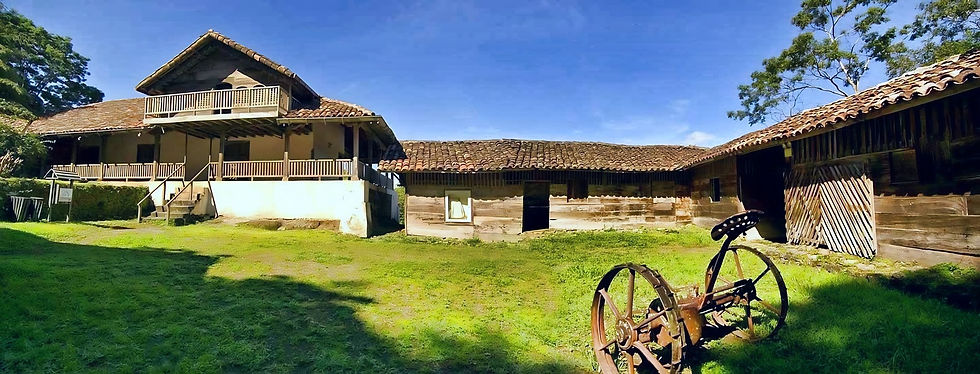Santa Rosa National Park
The Core of Costa Rica’s Heritage and Natural Beauty
Situated in the northwestern province of Guanacaste, Costa Rica, Santa Rosa National Park is one of the country’s most historically and ecologically important protected areas. Created in 1971, the park spans about 50,000 hectares, showcasing a variety of ecosystems, including tropical dry forests, savannas, and coastal zones. Beyond its rich biodiversity, the park is also of great historical significance, as it was the location of the pivotal Battle of Santa Rosa, a landmark event in both Costa Rican and Central American history.

History
Santa Rosa National Park was created to safeguard the tropical dry forests of the Guanacaste region, which were increasingly threatened by deforestation and agricultural expansion. However, the park’s historical significance is just as profound. In 1856, during the U.S. intervention in Central America, the Battle of Santa Rosa occurred, in which the Costa Rican army, led by General José Joaquín Mora, successfully repelled the forces of William Walker, an American adventurer attempting to seize control of Nicaragua and extend his influence in the region.
This victory was a defining moment in Costa Rican history, reinforcing the nation’s commitment to independence and sovereignty. To commemorate this historic event, the park houses the Santa Rosa National Historical Museum, where visitors can explore Costa Rica’s military heritage and cultural legacy.
Location
Santa Rosa National Park is situated in the northwestern part of Costa Rica, close to the city of Liberia in Guanacaste province. The park’s main entrance is located approximately 30 km north of Liberia and is easily accessible via Route 1, also known as the Inter-American Highway, which connects San José to the northern Nicaraguan border. From Liberia, visitors can take a secondary road that leads directly to the park entrance.
The park's location also offers convenient access to other popular tourist destinations in Guanacaste, making it an excellent choice for travelers exploring the Pacific coast of Costa Rica, with nearby beaches such as Playa Hermosa and Playa Panamá just a short drive away.
Biodiversity
Santa Rosa National Park boasts over 150 tree species, as well as a diverse array of plants, many of which are native to the Guanacaste region. Among the most notable trees are the Guanacaste tree (Enterolobium cyclocarpum), Cenízaro (Albizia saman), and Pochote (Pochota). The park’s flora is specially adapted to the region's seasonal variations, with distinct wet and dry periods, creating a unique environment where numerous plant and animal species thrive.
In terms of wildlife, Santa Rosa is known for its variety of mammals, such as howler monkeys (Alouatta palliata), white-faced capuchin monkeys (Cebus imitator), peccaries (Tayassu pecari), and armadillos. The park also provides habitat for larger predators like the puma (Puma concolor) and ocelot (Leopardus pardalis), though these elusive cats are difficult to spot in the wild.
The park is also a popular birdwatching destination, with over 250 species recorded, including the crested guan (Crax rubra), various toucans, and coatis. Additionally, the park’s savannas and dry tropical forests attract migratory birds on their long journeys, providing vital rest stops.
Wetlands and Mangroves
Beyond its terrestrial habitats, Santa Rosa National Park is home to vital wetland and mangrove ecosystems. These areas are crucial for aquatic species and serve as important stopovers for migratory birds. The park’s estuaries and marshes are essential for fish and reptiles, while the mangrove zones offer sanctuary for waterfowl, making it an ideal location for birdwatchers.
Conservation
Santa Rosa National Park is confronted with several conservation issues, including habitat loss and fragmentation caused by agricultural expansion and livestock farming in the surrounding regions. To address these challenges, park officials, along with various organizations, are actively working on ecological restoration efforts, species monitoring programs, and environmental education initiatives to safeguard the park's ecosystems and mitigate the negative impacts.
For more information about Santa Rosa National Park, visit the SINAC website: Read more
Emails
Reservations:
Phone Numbers
WhatsApp:
Phone: +506 86328760
Park Opening Hours
Mon - Sun
7:00 am – 4:00 pm
Tuesday
Closed
Official Tour Operator:
Tour Reservations:
Phone: +506 27770932
Site Map
-
Waterfalls Tours
-
Cultural Tours
-
Wildlife of Manuel Antonio
Manuel Antonio Activities
© Manuel Antonio National Park Online Services
To purchase your entrance ticket go to SINAC
%20(1)_1008x630.jpeg)
_972x630.jpeg)
%20(1)_945x630.jpeg)
%20(1)%20(1)_956x630.jpeg)
%20(1)_936x630.jpeg)
%20(1)_1650x630.jpeg)